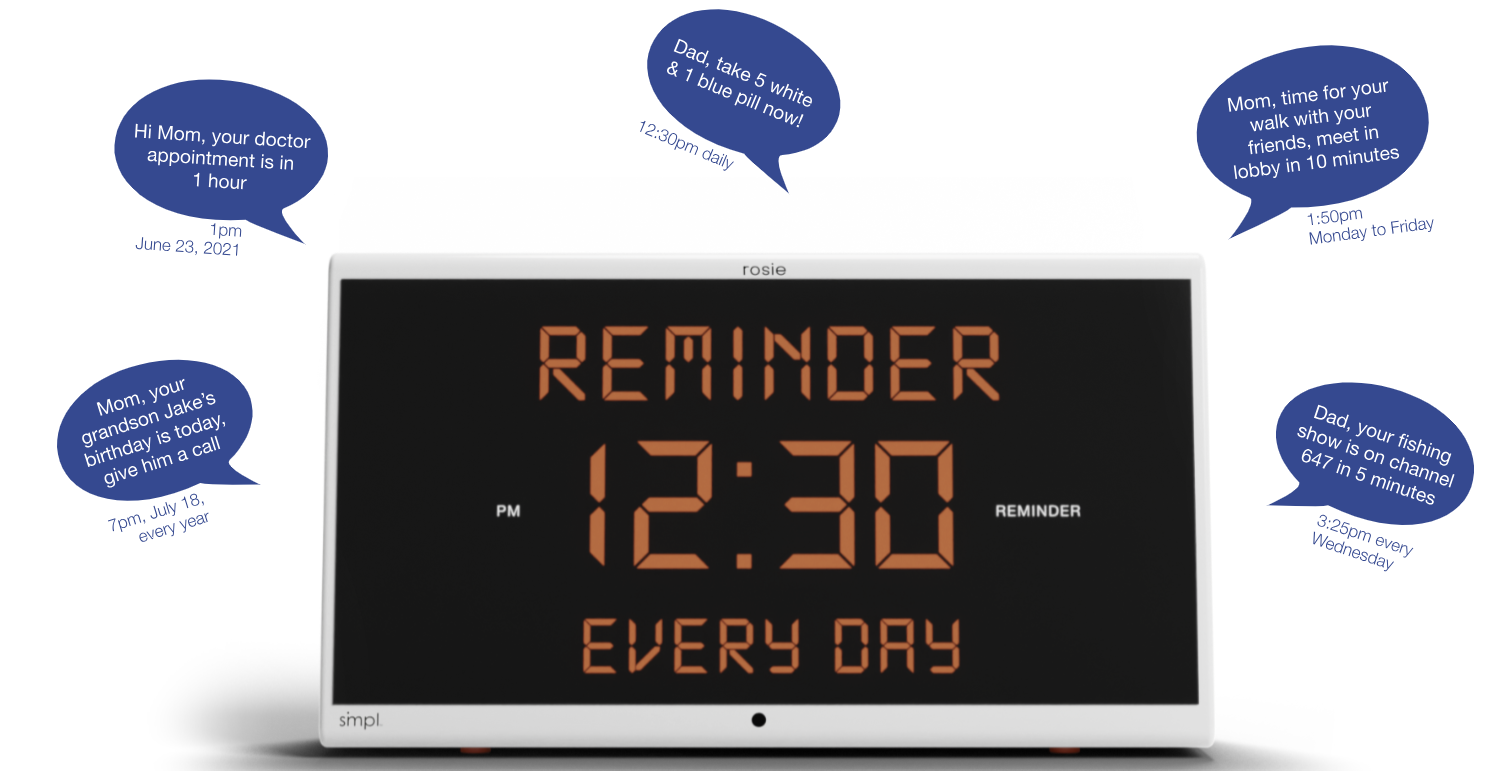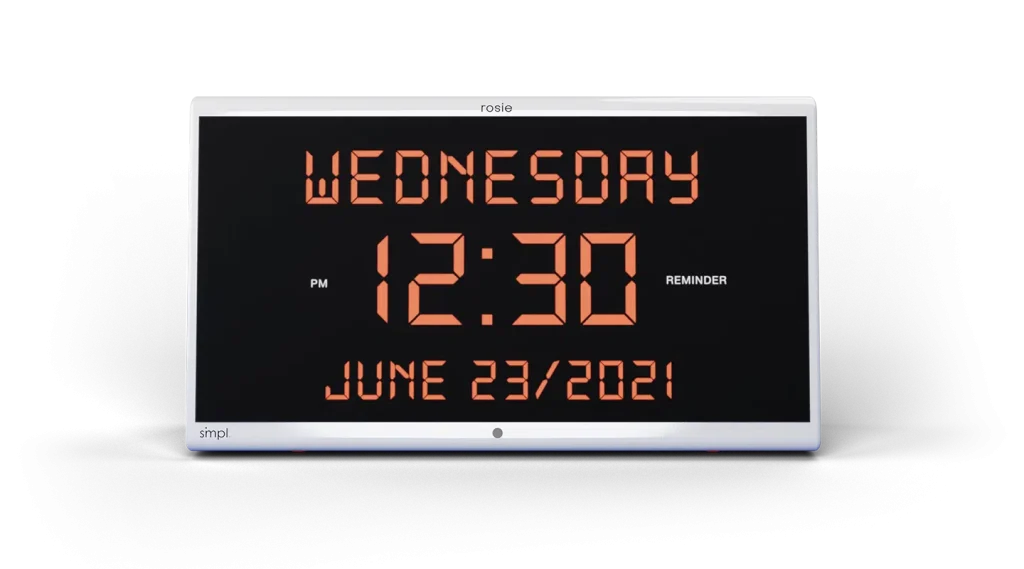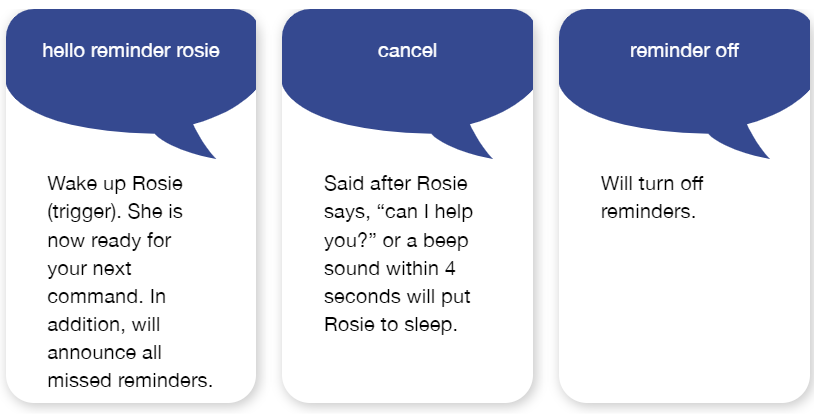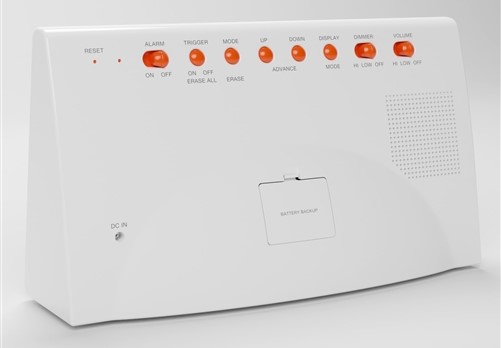Introduction
The Reminder Rosie 2.0 Clock is an assistive technology designed to aid individuals with memory impairments. This voice-activated clock provides personalized reminders to users with a voice familiar to them. Reminder Rosie is a hands-free and Wi-Fi-free clock with a simple interface that is beneficial for individuals with memory loss, visual impairments, or those who need assistance with daily routines and medication management.
Feature Highlights
- Personalized Voice Reminders: The end user, their caregiver, or their loved ones have the option to record up to 25 reminders or messages in their own voice. This helps creates a comforting, familiar environment for a user who may be experiencing memory loss.
- Voice Activated Setup and Use: Reminder Rosie is almost entirely voice-activated, minimizing the need to interact with buttons or screens. This is helpful for users with visual impairments and/or users who are not adept at using technology. Rosie guides the person setting up through the setup process. End users can use simple commands to use the product. It is also available in 5 languages, making it accessible to users whose native language is not English.
- Large, Clear Visual Display: The clock features a 2-inch LED display with multiple “day clock” options. Each option, whether it’s time, date, or both, displays with large characters that are visible from far away at any time of day. There are options to change sound and brightness levels as well.
Feature Deep Dive
1. Personalized Voice Reminders

The Reminder Rosie 2.0 clock announces reminders and messages for users throughout the day. From the perspective of the medical model of disability, the personalized voice reminders compensate for cognitive impairments such as memory loss. The focus here is on providing a solution to an individual’s specific health condition, aiding in managing daily activities and enhancing quality of life.
The personalized voice reminder feature allows the individual, their caregiver, or their loved ones to record up to 25 reminders or messages for the end user. Having these voice reminders throughout the day creates an environment where an individual can live independently and comfortably. This feature operates under the human rights and social models of disability because it creates that supportive environment to make living independently accessible and lessens anxieties for the individual and their caregivers.
The idea of having a caregiver or loved one set up reminders in their voice may be seen as operating under the charity model because caregivers intervene in the user’s living, which may create a hierarchical relationship. Regardless, end users who live alone may appreciate this feature because they would be able to hear from loved ones they aren’t seeing day-to-day and receive reminders in a voice that is familiar rather than robotic.
2. Voice Activated Setup and Use
Reminder Rosie’s voice-activated functionality and straightforward setup reinforce the biopsychosocial model of disability because they recognize the intersection of physical and social factors. Buttons are available for physical setup, but only voice commands are needed to set or respond to reminders. This is helpful for users with visual impairments, memory impairments, and/or older adults in general who are unable to physically set up the device and are in need of daily reminders. The accessibility the setup provides allows these users to remain living autonomously and feel empowered to set up and use the product without feeling frustrated or stressed out.
The voice-activated set up is also operating under the functional solutions model because the device is simplified for users who are not adept at using technology. Voice activation and simple commands removes the need for complex interactions with technology which can be a significant barrier for many older adults. By simplifying this interaction, Reminder Rosie aligns with the functional solutions model.
3. Large, Clear Visual Display

The large, clear LED display of the Reminder Rosie 2.0 is designed to be easily readable from any angle, making it easy to use for individuals with visual or cognitive impairments. This reinforces the functional solutions model of disability since it aims to work with the issue of visual impairments often seen in older adults by providing clear, visible, large text. It also reinforces the human rights model because it ensures an accessible display for all users regardless of visual ability. Everyone has the same opportunity to benefit from this technology.
Conclusion
The Reminder Rosie 2.0 clock is a helpful tool for supporting independent living among older adults, especially those with memory loss or visual impairments. With familiar reminders, voice-activation features, and a large visual display, the clock is a thoughtful piece of assistive technology. Its inclusive design makes it easy to use for those who need a little extra help managing their daily lives.


